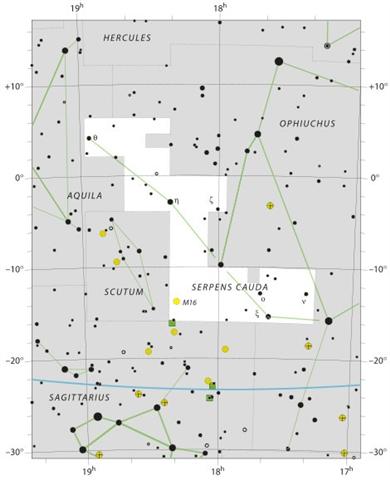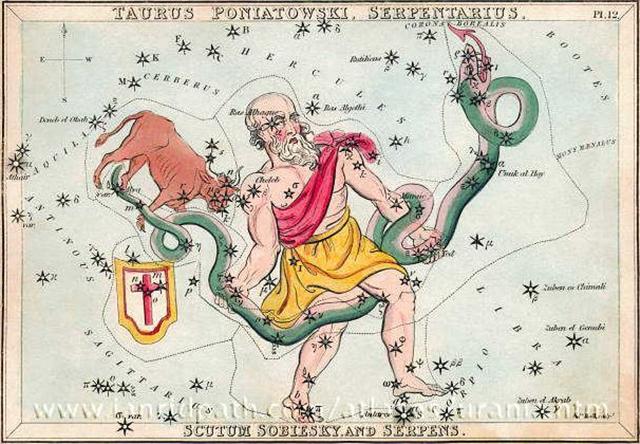2. The Serpent constellation could correspond to the adversary of Maui, the great 'eel' beneath the surface of 'sea'. Today the Serpent Carrier (Ophiuchus, Serpentarius) is a separate constellation from that of the Serpent (Serpens), but Carrier and Serpent belong together. By separating them the Serpent's head and tail have been separated:
 
We have to go back to the 16th
hour in order to find out where
in the G text the stars of
Serpens Caput may be. The head (caput)
is, of course, rising earlier
than the tail (cauda).
The caudal fin of a fish is
hiku, as in the glyph type
ika hiku (cfr e.g. Ga7-27
at 'December 5). It is the tail
part of the fish which is
splashing (hiku) when the
fish is drawn up:
The Rat's Tail (hiku-kio'e) has 6 rays and therefore it must correspond to Sun:
... Kioe can be added to hiki, resulting in the name of a plant, hiki kioe (Cyperus vegetus), 'a plant whose roots were eaten during times of famine and the stems of which were used for medicinal purposes' ... (Cfr at Ure Honu.) Here it seems as if I have slipped a cog. The plant is not hiki kioe but hiku kio'e. However:
To commence - or to finish - mat weaving is an obvious sign of women working. ... Winter is fleeing (hiki) and it is time to flex the knees lightly in the dance named te hikiga ha˙ga, to walk ahead on a path of smooth stones and with faces painted in colours not visible in the time of Moon - without Sun present no true colours can be seen. It is not necessary to argue any more, Te Kioe Uri must be located at the opening of summer (vaha hora), and in the geography of Easter Island it was (according to Manuscript E and the kuhane voyage) located somewhere on the eastern slope of Rano Kau (through which the agreeable breeze arrives) ... The sign vocabulary south of the equator is a reflection of that north of the equator, the same but opposite. Instead of the hexagonal outline of the 'drum' (Sun) in China the Rat's Tail is on Easter Island exhibiting the inside structure of the hexagon. Inside refers to winter time and at its end (tail) food was scarce - it was the time when even the roots of Cyperus vegetus were eaten.
|


